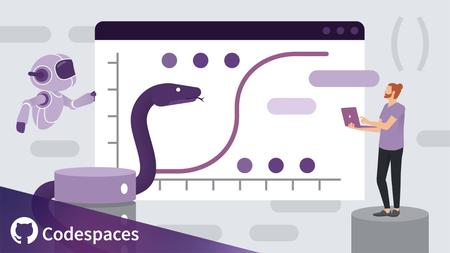English | MP4 | AVC 1280×720 | AAC 48KHz 2ch | 1h 18m | 221 MB
Are you looking for a practical way to use machine learning to solve complex real-world problems? Logistic regression is an approach to supervised machine learning that models selected values to predict possible outcomes. In this course, Notre Dame professor Frederick Nwanganga provides you with a step-by-step guide on how to build a logistic regression model using Python. Learn hands-on tips for collecting, exploring, and transforming your data before you even get started. By the end of this course, you’ll have the technical skills to know when and how to design, build, evaluate, and effectively manage a logistic regression model all on your own.
This course is integrated with GitHub Codespaces, an instant cloud developer environment that offers all the functionality of your favorite IDE without the need for any local machine setup. With GitHub Codespaces, you can get hands-on practice from any machine, at any time—all while using a tool that you’ll likely encounter in the workplace. Check out the “Using GitHub Codespaces with this course” video to learn how to get started.
Table of Contents
Introduction
1 Classifying data with logistic regression
2 What you should know
3 Using the exercise files
4 Using GitHub Codespaces with this course
Regression
5 What is regression
6 The anatomy of a regression model
7 Common types of regression
Logistic Regression
8 What is logistic regression
9 Making predictions with logistic regression
10 Interpreting the coefficients of logistic regression
11 Why and when to use logistic regression
Classifying Data with Logistic Regression
12 How to explore data for logistic regression in Python
13 How to prepare data for logistic regression in Python
14 How to build a logistic regression model in Python
15 How to interpret a logistic regression model in Python
Conclusion
16 Next steps
Resolve the captcha to access the links!
